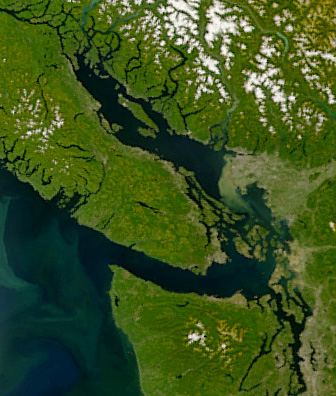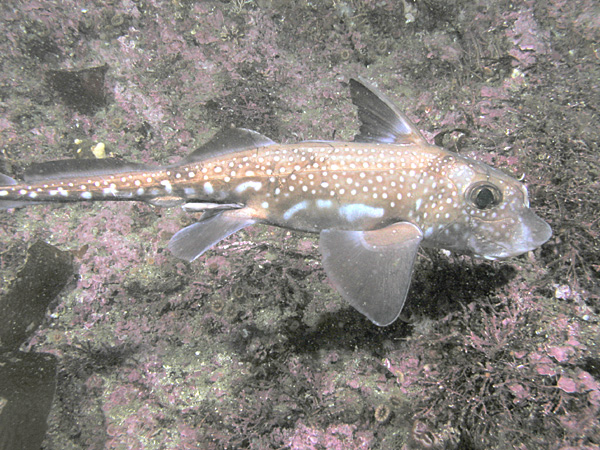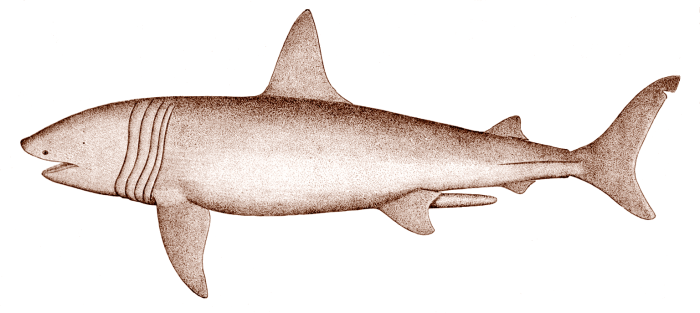|
List Of Fishes Of The Salish Sea
There are at least 253 identified species of fish known to inhabit the marine and brackish regions of the Salish Sea. Species are listed by common name, scientific name, typical occurrence within the Salish Seas regions. Salish Sea regions: JF=Strait of Juan de Fuca; SJ=San Juan Islands; BB=Bellingham Bay; SG=southern Strait of Georgia; NG=northern Strait of Georgia; NS=northern Puget Sound; SS=southern Puget Sound; HC=Hood Canal. Myxiniformes (Hagfish) Myxinidae * Pacific hagfish, ''Eptatretus stoutii'', JF Petromyzontiformes (Lampreys) Petromyzontidae * Pacific lamprey,Species (and hybrid) new to the marine ichthyofauna of the Salish Sea, added since the most recently published checklistMiller and Borton, 1980 ''Entosphenus tridentatus'', JF SJ BB SG NG NS SS HC * Western river lamprey,Primarily freshwater species ''Lampetra ayresii'', SJ BB SG NS Chimaeriformes (Ratfish) Chimaeridae * Spotted ratfish, ''Hydrolagus colliei'', JF SJ BB SG NG NS SS HC Lamniformes (Macker ... [...More Info...] [...Related Items...] OR: [Wikipedia] [Google] [Baidu] |
Spotted Ratfish
The spotted ratfish (''Hydrolagus colliei'') is a chimaera found in the north-eastern Pacific Ocean. Often seen by divers at night in the Pacific Northwest, this cartilaginous fish gets its characteristic name from a pointed rat-like tail. The ratfish lays leathery egg cases on the bottom of muddy or sandy areas, which are often mistaken by divers as something inanimate. While mainly a deep-water species, it occurs at shallower depths in the northern part of its range. The generic name, ''Hydrolagus'', comes from the Greek words ὕδωρ, meaning water,Liddell, H.G. & Scott, R. (1940). ''A Greek-English Lexicon. revised and augmented throughout by Sir Henry Stuart Jones. with the assistance of. Roderick McKenzie.'' Oxford: Clarendon Press. and λαγώς/λαγῶς, meaning hare, and the specific name honors Alexander Collie, who was a ship surgeon and early naturalist. The spotted ratfish is common in much of its range, not typically eaten by humans, and is not commercially c ... [...More Info...] [...Related Items...] OR: [Wikipedia] [Google] [Baidu] |
Brown Catshark
The brown catshark (''Apristurus brunneus'') is commonly found in the Pacific Ocean, ranging from the northern Pacific waters off the coast of British Columbia and south to the Baja California peninsula in Mexico. They may live as far south as Ecuador and Peru. Brown catsharks are deep-water sharks that live on the outer continental shelf and the upper slope. They have been known to live at depths ranging from 30 to 650 m and live on the bottom, usually in muddy or sandy areas. The brown catshark, when originally described, was called ''Catulus brunneus''. Description Brown catsharks have long, slender bodies with broad, bell-shaped snouts. They are dark brown with light-colored markings on the posterior margins of their fins. Their bodies are soft and flabby, with a weak skin that can easily be harmed. Brown catsharks' two dorsal fins are the same size and do not have spines. The first dorsal fin originates to the front of the pelvic fin and the second dorsal fin is located in ... [...More Info...] [...Related Items...] OR: [Wikipedia] [Google] [Baidu] |
Leopard Shark In Kelp
The leopard (''Panthera pardus'') is one of the five extant species in the genus ''Panthera'', a member of the cat family, Felidae. It occurs in a wide range in sub-Saharan Africa, in some parts of Western and Central Asia, Southern Russia, and on the Indian subcontinent to Southeast and East Asia. It is listed as Vulnerable on the IUCN Red List because leopard populations are threatened by habitat loss and fragmentation, and are declining in large parts of the global range. The leopard is considered locally extinct in Hong Kong, Singapore, South Korea, Jordan, Morocco, Togo, the United Arab Emirates, Uzbekistan, Lebanon, Mauritania, Kuwait, Syria, Libya, Tunisia and most likely in North Korea, Gambia, Laos, Lesotho, Tajikistan, Vietnam and Israel. Contemporary records suggest that the leopard occurs in only 25% of its historical global range. Compared to other wild cats, the leopard has relatively short legs and a long body with a large skull. Its fur is marked with roset ... [...More Info...] [...Related Items...] OR: [Wikipedia] [Google] [Baidu] |
Carcharhiniformes
Carcharhiniformes , the ground sharks, are the largest order of sharks, with over 270 species. They include a number of common types, such as catsharks, swellsharks, and the sandbar shark. Members of this order are characterized by the presence of a nictitating membrane over the eye, two dorsal fins, an anal fin, and five gill slits. The families in the order Carcharhiniformes are expected to be revised; recent DNA studies show that some of the conventional groups are not monophyletic. The oldest members of the order appeared during the Middle-Late Jurassic, which have teeth and bodyforms that are morphologically similar to living catsharks. Carchariniformes first underwent major diversification during the Late Cretaceous, initially as small-sized forms, before radiating into medium and large body sizes during the Cenozoic. Families According to FishBase, the nine families of ground sharks are: [...More Info...] [...Related Items...] OR: [Wikipedia] [Google] [Baidu] |
Great White Shark
The great white shark (''Carcharodon carcharias''), also known as the white shark, white pointer, or simply great white, is a species of large mackerel shark which can be found in the coastal surface waters of all the major oceans. It is notable for its size, with larger female individuals growing to in length and in weight at maturity. However, most are smaller; males measure , and females measure on average. According to a 2014 study, the lifespan of great white sharks is estimated to be as long as 70 years or more, well above previous estimates, making it one of the longest lived cartilaginous fishes currently known. According to the same study, male great white sharks take 26 years to reach sexual maturity, while the females take 33 years to be ready to produce offspring. Great white sharks can swim at speeds of 25 km/h (16 mph) for short bursts and to depths of . The great white shark is an apex predator, as it has no known natural predators other than, on v ... [...More Info...] [...Related Items...] OR: [Wikipedia] [Google] [Baidu] |
Salmon Shark
The salmon shark (''Lamna ditropis'') is a species of Lamnidae, mackerel shark found in the northern Pacific ocean. As an apex predator, the salmon shark feeds on salmon, squid, sablefish, and herring. It is known for its ability to maintain stomach temperature (homeothermy), which is unusual among fish. This shark has not been demonstrated to maintain a constant body temperature. It is also known for an unexplained variability in the sex ratio between eastern and western populations in the northern Pacific. Description Adult salmon sharks are medium grey to black over most of the body, with a white underside with darker blotches. Juveniles are similar in appearance, but generally lack blotches. The snout is short and cone-shaped, and the overall appearance is similar to a small great white shark. The eyes are positioned well forward, enabling binocular vision to accurately locate prey. The salmon shark generally grows to between 200 and 260 cm (6.6–8.6 ft) in le ... [...More Info...] [...Related Items...] OR: [Wikipedia] [Google] [Baidu] |
Lamnidae
The Lamnidae are the family of mackerel sharks known as white sharks. They are large, fast-swimming predatory fish found in oceans worldwide, though prefer environments with colder water. The name of the family is formed from the Greek word ''lamna'', which means "fish of prey", and was derived from the Greek legendary creature, the Lamia.: ''A source-book of biological names and terms'', 1944, Edmund Carroll Jaeger These sharks have pointed snouts, spindle-shaped bodies, and large gill openings. The first dorsal fin is large, high, stiff and angular or somewhat rounded. The second dorsal and anal fins are minute. The caudal peduncle has a couple of less distinct keels. The teeth are gigantic. The fifth gill opening is in front of the pectoral fin and spiracles are sometimes absent. They are powerful, heavily built sharks, sometimes weighing nearly twice as much as other sharks of comparable length from other families. Many sharks in the family are among the fastest-swimming f ... [...More Info...] [...Related Items...] OR: [Wikipedia] [Google] [Baidu] |
Basking Shark
The basking shark (''Cetorhinus maximus'') is the second-largest living shark and fish, after the whale shark, and one of three plankton-eating shark species, along with the whale shark and megamouth shark. Adults typically reach in length. It is usually greyish-brown, with mottled skin, with the inside of the mouth being white in color. The caudal fin has a strong lateral keel and a crescent shape. Other common names include bone shark, elephant shark, sail-fish, and sun-fish. In Orkney, it is commonly known as hoe-mother (sometimes contracted to homer), meaning "the mother of the pickled dog-fish". The basking shark is a cosmopolitan migratory species, found in all the world's temperate oceans. A slow-moving filter feeder, its common name derives from its habit of feeding at the surface, appearing to be basking in the warmer water there. It has anatomical adaptations for filter-feeding, such as a greatly enlarged mouth and highly developed gill rakers. Its snout is conic ... [...More Info...] [...Related Items...] OR: [Wikipedia] [Google] [Baidu] |
Cetorhinidae
Cetorhinidae is a family of filter feeding mackerel sharks, whose members are commonly known as basking sharks. It includes the extant basking shark, ''Cetorhinus'', as well as two extinct genera, ''Caucasochasma'' and ''Keasius ''Keasius'' is an extinct genus of basking sharks that lived during the Cenozoic. It contains four valid species, which have been found in North America, Europe, and Antarctica Antarctica () is Earth's southernmost and least-populated c ...''. References {{Taxonbar, from=Q16542604 Cetorhinidae Shark families Taxa named by Theodore Gill ... [...More Info...] [...Related Items...] OR: [Wikipedia] [Google] [Baidu] |



.png)

